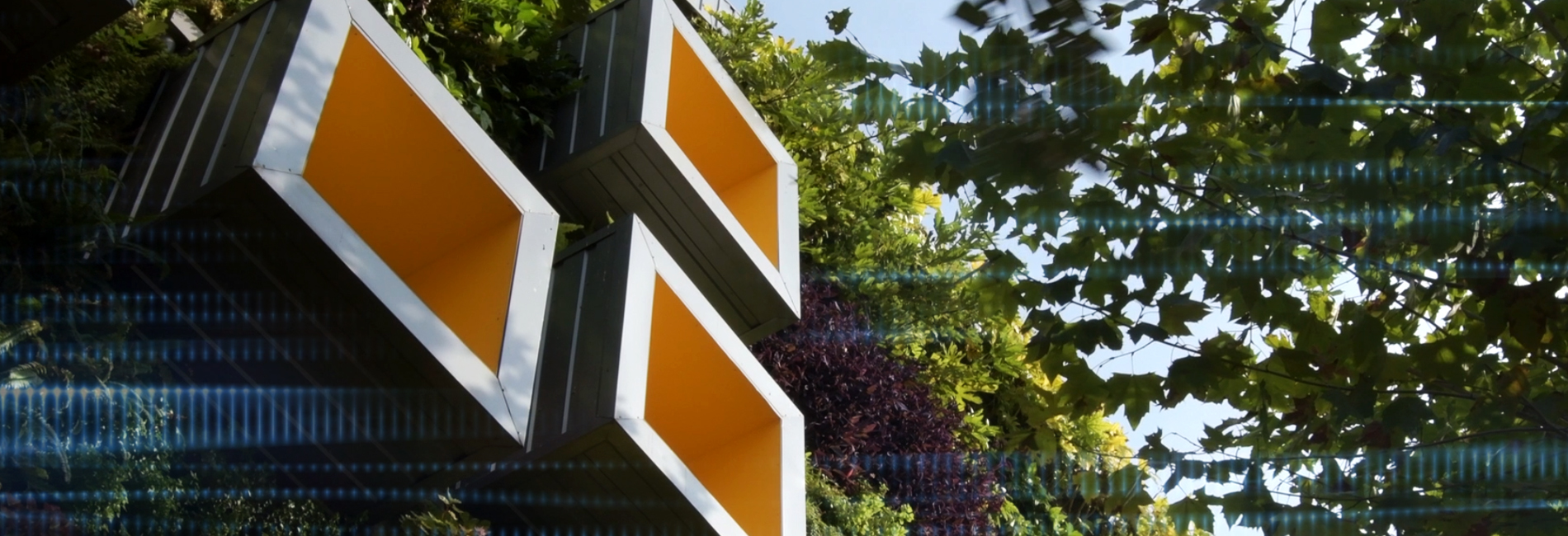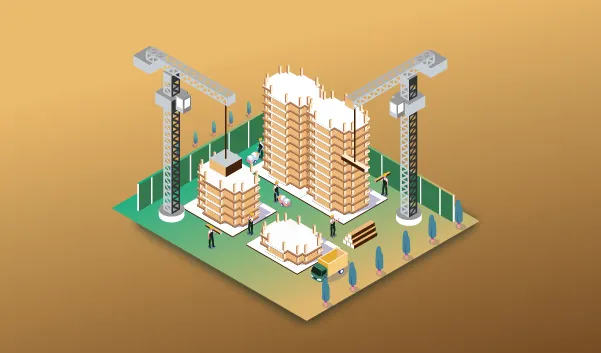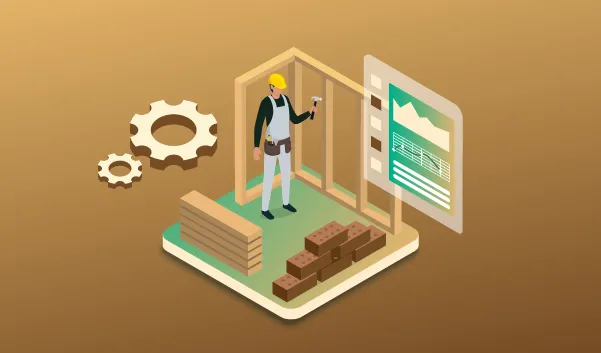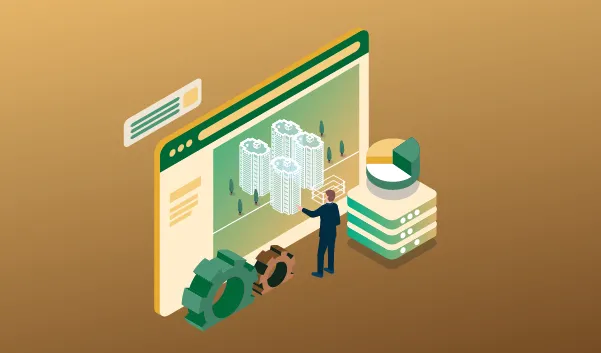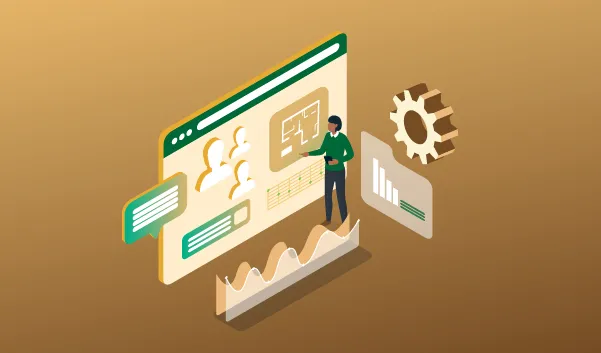Green Building Construction: Harnessing Digital Solutions for Decarbonization & Efficiency
To achieve greener buildings, companies need technology that can enable decarbonization efforts quickly and keep costs under control.
What is green building concept in construction?
Green building involves eco-conscious practices in every aspect, from site selection to design, construction, operation, maintenance, renovation, and even deconstruction. It prioritizes sustainability, reducing carbon emissions and promoting human health while preserving the natural environment.
Pursuing a Greener Purpose
Cities create a huge carbon footprint. As urban populations grow, they will continue to produce vast amounts of emissions and waste. Cities are responsible for 70% of greenhouse gas emissions, whereas the construction industry accounts for 38% of global energy-related emissions.
As a major employer and a major contributor, the construction industry also holds the solution for sustainability.
Reset and Improve the Way You Build
What can construction stakeholders do to accelerate sustainability? Explore how virtual twin can streamline construction projects, optimize construction processes and reduce energy consumption.
The Green Lining in Grey Buildings
There is an increasing number of sustainable innovations already in place to make the construction industry greener, which includes:
Using sustainable materials
Authorities are imposing carbon taxes that force the industry to be more responsible for its materials usage, such as using more recycled materials, including reused steel, and environmentally friendly materials like wood or bamboo.
"Productizing" construction
The Virtual Twin technology enables construction stakeholders to handle integration-ready construction modules, which help efficient onsite installation and shorten time delivery with fewer on-site workers.
Collaborating for energy efficiency
By leveraging modular assemblies, the number of actors responsible for the facade system can be reduced, while eliminating the risks of thermal bridges.
While efforts are underway to decarbonize the construction industry, a successful implementation is challenging without digitalization.
A key digital enabler in the pursuit of sustainable progress is an integrated cloud environment. This is where Dassault Systèmes’ 3DEXPERIENCE® platform delivers value. It enables companies to share data safely and easily while reducing large-scale inefficiencies across the construction value chain, resulting in less waste, cost and carbon emissions.
Reinvent the Construction Industry With Productization
Discover how integration-ready construction modules transform the value chain by accelerating the design and delivery of unique, sustainable buildings.
Building Better on the Cloud
On the cloud-based 3DEXPERIENCE platform, companies can create a virtual twin of the built environment and use it to test the implementation of more sustainable materials and construction techniques. This enables companies to improve manufacturing and construction processes while incorporating better sustainability consideration throughout the entire project lifecycle.
For companies aiming to construct sustainable buildings, the 3DEXPERIENCE platform allows them to:
- Virtually select environment-friendly materials
- Optimize and standardize construction processes
- Digitally simulate, build and test buildings
- Ensure digital continuity
Virtually select environment-friendly materials
By virtually exploring and choosing low-carbon structural materials, companies can measure the impact on emissions even before the materials reach the construction site. Through virtual simulation, Bouygues Group aims to reduce its concrete-related carbon intensity by 40% and increase the use of sustainable wood by 30%.
Optimize and standardize construction processes
Companies gain complete in-house control over every aspect of their work, from design, manufacturing, transportation to the assembly of building components. Digital technology enables Bouygues Group to build factories that can manufacture 2,000 modular apartments per year that are quick, clean and easy to assemble at the worksite. Additionally, this low-carbon autonomous social housing decreases water consumption by 70% and household waste by 40%.
Digitally simulate, build and test buildings
Companies can rely on digital engineering solutions to reduce a building’s long-term environmental impact. Through digital measurement, benchmarking, knowledge sharing, and implementation of best practices, companies can mitigate carbon-intensive processes, speed up construction and keep costs low. CadMakers created 3D structural models and simulations to complete the Tallwood House project about 70% faster and at less cost while reducing 2,432 metric tons of CO2.
Ensure digital continuity
Teams traditionally isolated from the construction process can collaborate on all project parameters, leading to better planning and resource management and reduced errors and design time. Leko Labs uses the 3DEXPERIENCE platform to simulate all aspects of the workflow and share designs among all stakeholders to perfect and optimize every element of a project digitally before committing to physical resources.
There is now a powerful, collaborative and scalable way to build and monitor sustainably, brick by brick — with the 3DEXPERIENCE platform.
Driving Circular Innovation: Insights from Our Experts
How can circularity be built into building designs?
To deconstruct buildings, we must act during the design phase, not during demolition. It starts at the engineering phase, where engineers need to understand what is available on the market. ‘Design from Supply’ means that you want to design from the stock or from what is available, either reused or repurposed material. To achieve such an approach, you need to understand the stock available. An initiative incorporates virtual twin practices to design a detailed model of the building so that you get the list of procurements, connected to the circular marketplace of supply. Then you can understand what’s available locally and improve circularity.
FAQ About Green Building Initiative & Technology
Related Content with Green Architecture
Decarbonization
Decarbonization aims at reducing emissions throughout the product and service’s life cycle and across the full value chain.
Decarbonizing Industry Operations
Through digital transformation, industries can rethink their operations, from product design to supply chains, and move toward more sustainable, resource-efficient processes.
Architecture, Engineering & Construction
Maximize construction sustainability and project profitability through collaboration and productization.
Achieve Sustainable Construction
Sustainability regulations are increasingly complex raising the number of interfaces. Build in a collaborative virtual environment to comply with environmental regulations.
